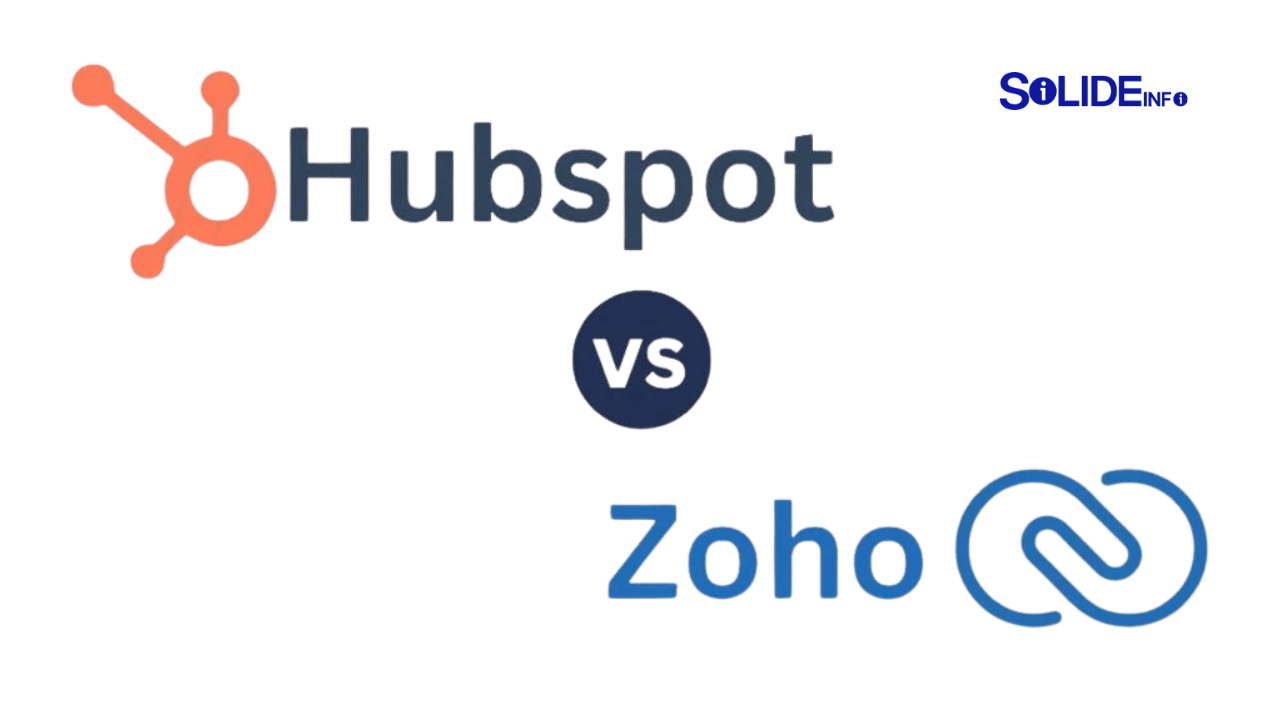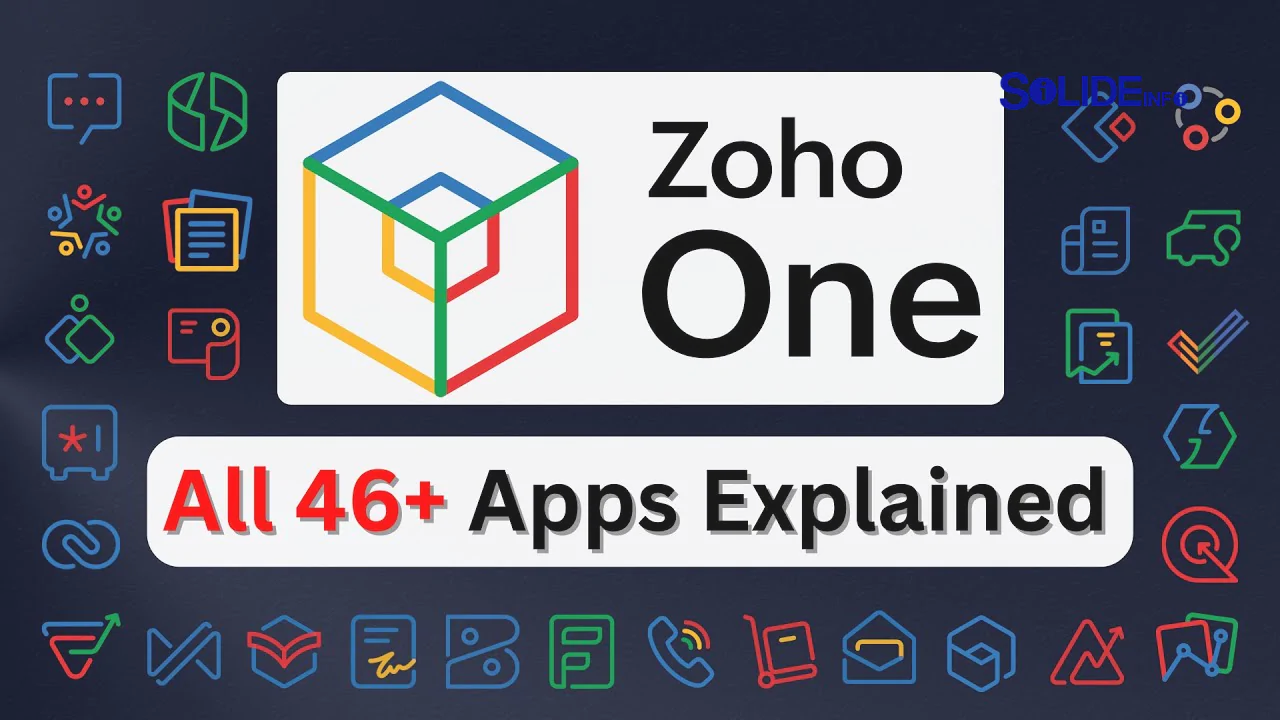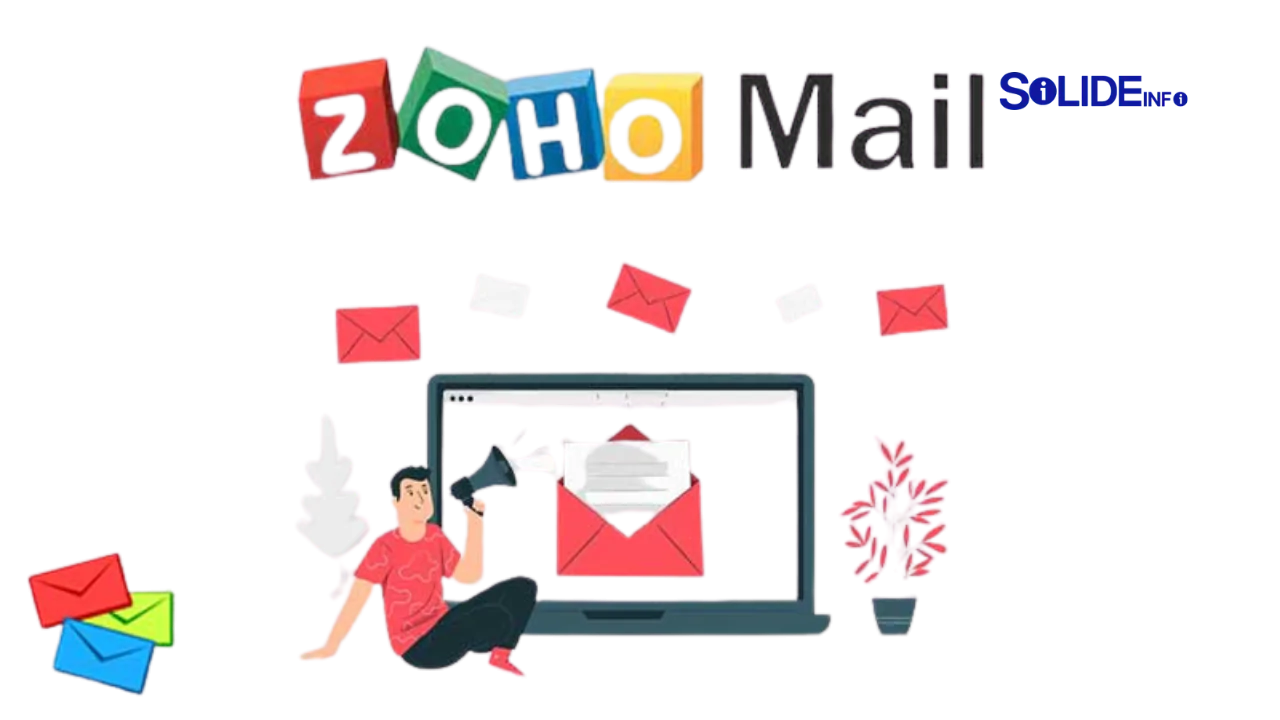Zoho One vs. HubSpot: Which All-in-One Platform Is Actually Worth Your Money?

Let’s be honest, running a business today means juggling an absurd number of apps. You have one for email marketing, another for your sales pipeline, a third for customer support tickets, a fourth for project management, and about ten others held together with digital duct tape and a prayer. This “Franken-stack” of software is not only expensive but also incredibly inefficient. Data gets lost, teams become siloed, and you spend more time managing your tools than using them. This is the exact problem that leads businesses to the promised land of integrated suites, and two names tower over all others in this arena. So, you’ve landed at the ultimate showdown: the Zoho One vs. HubSpot debate. Both promise a single, unified ecosystem to run your entire operation, but they approach this utopia from completely different angles. HubSpot tempts you with a beautifully simple, inbound-focused platform, while Zoho One dangles the keys to a kingdom of over 45 applications for a price that seems too good to be true. Which one is the right long-term partner for your business? Let’s get into the nitty-gritty and find out.
The Core Philosophy: A Kingdom vs. a Laser-Focused Hub
Before we dive into features and pricing spreadsheets, it’s crucial to understand the fundamental difference in philosophy between Zoho One and HubSpot. This isn’t just about comparing app to app; it’s about understanding two distinct visions for how business software should work. Grasping this will make your decision infinitely easier.
H3: Zoho One – The “Everything But the Kitchen Sink” Approach
Zoho’s strategy is one of staggering breadth and integration. With Zoho One, they aren’t just selling you a CRM and some marketing tools; they are handing you an entire operating system for your business. It includes applications for sales, marketing, support, HR, finance, operations, and business intelligence. Think of it less as a single product and more as a master key that unlocks nearly every piece of software Zoho makes. Their goal is to provide a tool for every conceivable business need, ensuring you never have to leave their ecosystem. This is incredibly powerful for companies that want to consolidate vendors and have every department working from a connected dataset. However, this vastness can also be its biggest challenge. While the integration between apps is impressive, mastering an ecosystem this large requires a significant commitment to learning and implementation. Effectively deploying this powerful suite of tools requires strong internal processes and a clear understanding of your business’s cybersecurity framework to ensure all that connected data remains secure.
H3: HubSpot – The Inbound Marketing Flywheel Perfected
HubSpot, on the other hand, grew from a very specific and powerful idea: inbound marketing. Their entire platform is built around the concept of attracting, engaging, and delighting customers. It started as a marketing automation powerhouse and has since expanded to include a Sales Hub, Service Hub, CMS Hub, and Operations Hub. While it now covers most business functions, its heart and soul still lie in the customer-facing journey. Its user interface is famously clean, intuitive, and a genuine pleasure to use, which is a major reason for its popularity. HubSpot’s approach is to provide best-in-class tools for the core functions of marketing, sales, and service, and to make them work together seamlessly. The platform feels less like a collection of disparate apps and more like one cohesive machine. This focus on user experience comes at a premium price, but for teams who value ease of use and a shallow learning curve, it’s often a price they’re willing to pay. Choosing the right software is a significant financial decision for any business, and the initial investment can have long-term implications.
The Heart of the Matter: CRM Capabilities
At the center of both ecosystems lies the Customer Relationship Management (CRM) platform. This is where you’ll store customer data, track interactions, and manage your relationships. While both serve this core function, their features and how they present them differ significantly, which can make a big difference in the daily workflow of your sales and marketing teams.
A user on a popular marketing subreddit recently summed up the general feeling perfectly: “HubSpot feels like a luxury sedan—smooth, intuitive, and everything just works beautifully, but the optional extras will cost you a fortune. Zoho One is like a fully-loaded pickup truck; it has every tool you could ever imagine, can haul anything, but you’ll need to read the manual to figure out how to operate the winch.” This really captures the essence of the Zoho One vs. HubSpot comparison; it’s a classic battle of accessibility versus raw, unadulterated power.
The HubSpot CRM is renowned for its free offering, which is genuinely one of the most generous in the industry. It provides a clean, visual pipeline, contact management, deal tracking, and task scheduling. It’s designed to be incredibly easy to set up and use from day one, which is a massive win for small teams or businesses new to CRM. As you move into the paid tiers of the Sales Hub, you unlock more advanced features like sales automation, e-signatures, and predictive lead scoring. The real magic of HubSpot’s CRM is its deep integration with its Marketing Hub, allowing for a seamless flow of information from a lead’s first website visit to the final closed deal. However, the limitations of the free version become apparent quickly, and the cost to unlock the more powerful features can escalate rapidly.
Conversely, Zoho CRM (the version included in Zoho One) is an enterprise-grade powerhouse. It offers a level of customization and depth that can be overwhelming at first but is invaluable for complex sales processes. You can create custom modules, intricate workflows, and detailed reports that can be tailored to your exact business needs. It comes packed with AI-powered features, like Zia, an assistant that can provide sales forecasts, detect anomalies in your pipeline, and suggest the best times to contact leads. While the user interface has improved significantly over the years, it still presents a steeper learning curve than HubSpot’s. For businesses that need to manage intricate sales cycles or have very specific data requirements, Zoho CRM’s flexibility is a game-changer that HubSpot often struggles to match without expensive custom development. It’s the kind of tool that grows with you, scaling from a simple contact database to a sophisticated engine for your entire revenue operation.
Marketing and Sales Automation: The Engine Room
This is where the battle between Zoho One vs. HubSpot gets particularly interesting. Both platforms aim to automate the repetitive tasks that bog down your marketing and sales teams, but their execution and pricing models create a stark contrast.
HubSpot’s Marketing Hub is, for many, the gold standard in marketing automation. Its visual workflow builder is incredibly intuitive, allowing you to create complex nurturing sequences, internal notifications, and data updates with a simple drag-and-drop interface. Everything from email marketing and social media scheduling to landing page creation and SEO recommendations is tightly integrated and easy to manage. The platform excels at providing deep analytics on campaign performance, helping marketers prove their ROI. However, this power comes at a significant cost, often tied to the number of marketing contacts in your database. As your audience grows, so does your bill, which can become a major pain point for scaling businesses. Many companies start with the free tools, fall in love with the experience, and then face a steep price jump to access the automation features they truly need.
Zoho One counters this with an arsenal of marketing and sales applications included in its single subscription. You get Zoho Campaigns for email marketing, Zoho Social for social media management, Zoho Forms and Zoho Sites for lead capture, and Zoho SalesIQ for live chat and website visitor tracking, among others. The workflow automation within Zoho CRM and its integration with these other apps allow for powerful sequences that can rival HubSpot’s. For example, you can create a rule that when a lead fills out a form on your site, they are automatically added to the CRM, assigned to a salesperson based on territory, and entered into a specific email nurture sequence in Zoho Campaigns. While setting this up might require a bit more clicking around between different apps compared to HubSpot’s unified interface, the raw capability is undoubtedly there—and it’s all included for one flat fee, regardless of how many contacts you have. This makes it an incredibly compelling option for businesses that want sophisticated automation without the fear of a skyrocketing monthly bill. The rise of AI in business process automation is making these tools even more powerful, and both platforms are heavily investing in this area.
The Elephant in the Room: Pricing and Value
No comparison of Zoho One vs. HubSpot would be complete without a deep, honest look at pricing. This is arguably the single biggest differentiating factor and the primary reason most businesses start comparing them in the first place. The models are so different that it’s like comparing the cost of a buffet to an à la carte menu.
Zoho One’s pricing is famously, almost shockingly, straightforward. It offers two main plans: Flexible User Pricing, where you pay per user per month, and All Employee Pricing, where you get a significantly discounted per-user rate if you purchase a license for every single employee in your company. That’s it. For that one flat fee, each user gets access to virtually the entire Zoho ecosystem of over 45 applications. There are no contact tiers for marketing, no feature gates that require you to upgrade to a “Pro” or “Enterprise” plan to unlock a crucial automation tool. The value proposition is immense and almost unbeatable on paper. You get finance apps, HR apps, custom app builders, and so much more, all included. This transparent pricing model is a massive relief for businesses that need budget predictability.
HubSpot, in stark contrast, employs a complex, multi-layered pricing strategy. It has different “Hubs” (Marketing, Sales, Service, etc.), each with its own tiered plans (Starter, Professional, Enterprise). You can bundle them, but the cost adds up quickly. The Marketing Hub’s price is heavily influenced by the number of marketing contacts, while the Sales and Service Hubs are priced per user (or “seat”). A small team might start on a cheap Starter plan, but as they grow and need the features in the Professional tier, the monthly cost can easily jump from a few hundred to several thousand dollars. While this allows you to pay for only what you need initially, it often leads to difficult conversations down the line when the bill inflates due to team growth or the need for more advanced functionality. As noted by industry watchdogs, understanding complex software-as-a-service (SaaS) pricing is a growing challenge for businesses, a fact highlighted in a report by the Federal Trade Commission (nofollow) on subscription models. HubSpot’s model, while flexible, demands careful planning to avoid unexpected costs.
Ecosystem, Integrations, and Long-Term Scalability
An all-in-one business platform can’t exist in a vacuum. Your choice will impact how you integrate with other essential tools, from accounting software to industry-specific applications. Both platforms have robust app marketplaces, but their approach to expansion differs.
HubSpot’s App Marketplace features over 1,000 integrations, with deep, well-supported connections to major platforms like Salesforce, NetSuite, and Slack. The quality of these integrations is typically very high, as HubSpot maintains a strong partner program. Their focus is on ensuring their core platform can be the central hub that connects to other best-in-class tools. This is ideal for companies that already have a set of beloved tools they don’t want to replace but wish to integrate more deeply with their CRM and marketing automation engine. This approach aligns with a “hub-and-spoke” model of IT architecture. When managing your website, for example, having a seamless connection between your HubSpot portal and your WordPress security protocols is essential for lead tracking and data integrity.
Zoho One’s philosophy is different. While it also has an extensive marketplace, its primary goal is to be the tool you need, reducing the reliance on third-party applications. Why find a separate project management tool when you have Zoho Projects? Why pay for a survey tool when you have Zoho Survey? This “in-house” approach leads to incredibly deep and seamless integration between its own apps, often better than what you could achieve with third-party connectors. The platform is also highly extensible through Zoho Creator, a low-code application builder that lets you create custom apps and functionalities to fill any gaps. This makes Zoho One a developer’s playground and an excellent choice for businesses with unique processes that can’t be served by off-the-shelf software. It’s a self-contained ecosystem designed for ultimate customization and long-term scalability without vendor sprawl.
The Final Verdict: Making the Right Choice for Your Business
After diving deep into the features, philosophies, and finances, the Zoho One vs. HubSpot decision becomes less about which platform is “better” and more about which one is the right fit for your company’s culture, budget, and long-term vision. It’s a choice between two excellent but fundamentally different solutions. If your priority is user experience, you operate in a marketing-heavy industry, and you have the budget to scale, HubSpot is an outstanding choice. Its intuitive interface and powerful inbound marketing engine can help your team get up and running quickly and deliver fantastic results. The platform’s polish and focus on the customer journey are second to none, and for many, that experience is worth the premium price tag.
However, if you are looking for unparalleled value, incredible functional breadth, and a platform that can genuinely run your entire business for a predictable, affordable price, then Zoho One is almost impossible to ignore. It requires a greater upfront investment in learning and implementation, and its user interface may not be as slick as HubSpot’s, but the sheer power and number of tools you get for your money are staggering. For bootstrapped startups, small businesses looking to consolidate their tech stack, or larger companies with complex operational needs, Zoho One offers a comprehensive and highly customizable ecosystem that can scale with you for years to come. Ultimately, the Zoho One vs. HubSpot debate is won by the platform that best aligns with your strategic goals.
What are your experiences with these platforms? Have you made the switch from one to the other? Share your thoughts in the comments below—we’d love to hear your story!



